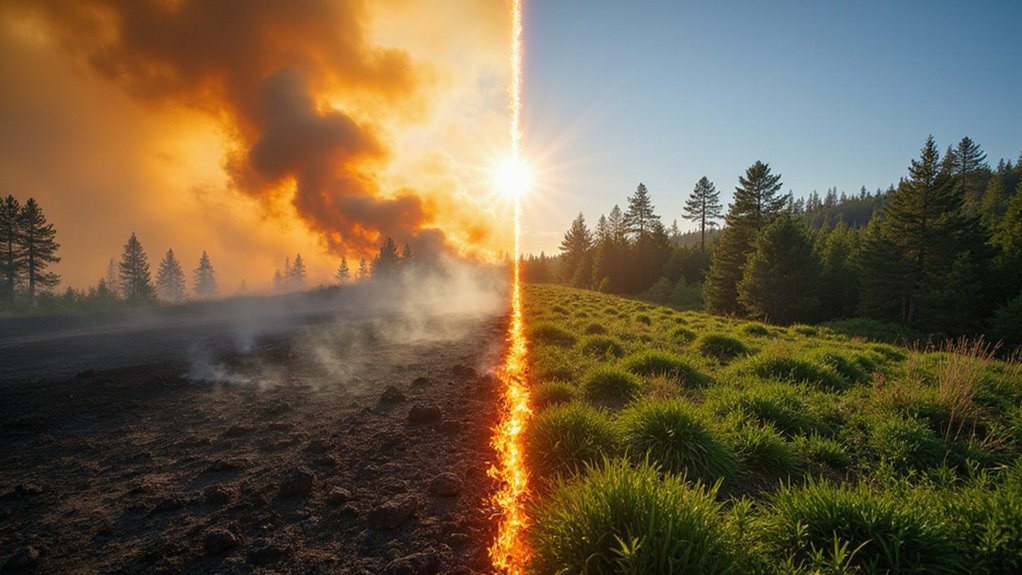While scientific evidence continues to mount, nearly 15% of Americans still deny that climate change is happening. This denial isn’t spread evenly across the country. In states like Oklahoma, Mississippi, Alabama, and North Dakota, over 20% of residents don’t believe in climate change. Some areas show even higher rates, with Shasta County, California reaching a 52% denial rate.
Geography plays a big role in climate beliefs. People living on the East and West Coasts generally accept climate science, while those in the Midwest and Deep South are more skeptical. These patterns often follow political lines, with influential figures like former President Trump amplifying denial messages through social media. The shift from open denial to climate erasure represents a sophisticated strategy to suppress climate information while avoiding direct confrontation with scientific facts.
Climate denial follows geographical patterns, with coastal regions more accepting of climate science than America’s heartland and southern states.
Government actions have sometimes made the problem worse. Recent years have seen climate data erased from government websites and reports removed. The dismissal of 400 experts halted important climate assessments that helped inform policy decisions. Some policy proposals, like Project 2025, seek to expand fossil fuels while dismantling climate agencies.
Education about climate change varies widely across the country. Only 26 states and Washington D.C. received good grades for climate coverage in their science standards. Six states failed completely: Alabama, Georgia, Pennsylvania, South Carolina, Texas, and Virginia. This inconsistent education leaves many students without accurate information about climate science.
Social media platforms spread climate denial messages quickly. Posts calling global warming a “hoax” can reach millions of followers. These platforms create echo chambers where people only hear views that match what they already believe. The analysis of 7.4 million tweets revealed formation of isolated belief communities with minimal cross-communication.
Many people find it hard to worry about climate change because it seems distant or abstract. It’s easier to ignore information that suggests we need to make uncomfortable changes. Without visible effects in their daily lives, people can minimize the risks. This psychological distance makes it hard for many to take action until they personally experience extreme weather events or other climate impacts. Meanwhile, countries continue to provide approximately fossil fuel subsidies of $6 trillion annually that could otherwise fund critical climate initiatives.
References
- https://record.umich.edu/articles/nearly-15-of-americans-deny-climate-change-study-finds/
- https://thebulletin.org/2025/02/climate-change-education-can-survive-four-more-years-of-climate-change-denial/
- https://www.govexec.com/management/2025/07/why-federal-government-making-climate-data-disappear/406715/
- https://vcresearch.berkeley.edu/news/project-2025-could-be-disastrous-climate-legal-scholars-are-preparing-fight-back
- https://en.wikipedia.org/wiki/2025_in_climate_change








